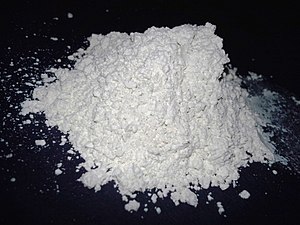Bed bug control techniques
Bed bug infestations spread easily in connecting units and have negative effects on psychological well-being and housing markets.
[1] Insecticide application may cause dispersal of bed bugs to neighbouring areas of a structure, spreading the infestation.
It is advisable to break or mark these infested items to prevent their being unintentionally recycled and furthering the spread of bed bugs.
In 2008 a study was conducted on bed bug resistance to a variety of both old and new insecticides, with the following results, listed in order from most- to least-effective: λ-cyhalothrin, bifenthrin, carbaryl, imidacloprid, fipronil, permethrin, diazinon, spinosyn, dichlorvos, chlorfenapyr, and DDT.
[8] Note that the first of these, λ-cyhalothrin, is itself a pyrethroid-based insecticide— in the past it has been used principally for the treatment of cotton crops and so bed bugs have not yet developed a genetic resistance to it.
Up until the 1990s chlorpyrifos was used as an agent with longterm effect, but the EC biocide declaration 98/8[9] prohibited the use from August 2008 onward.
[11] Non-residue methods of treatment such as steaming and vacuuming are preferable to the contamination of mattresses, pillows and bed covers with insecticides.
Preliminary research has shown the fungal biopesticide Beauveria bassiana, which has been used for years as an outdoor organic pesticide, is also highly effective at eliminating bed bugs exposed to cotton fabric sprayed with fungus spores.
Some people, especially those with compromised immune systems, may react negatively to the concentrated presence of the fungus directly following an application.
[citation needed] Inorganic materials such as diatomaceous earth or amorphous silica gel may be used in conjunction with other methods to manage a bed bug infestation, provided they are used in a dry environment.
Upon contact with such dust-like materials, the waxy outer layer of the insect's exoskeleton is disrupted, which causes them to dehydrate.
Silica gel, on the other side, performed in vitro consistently well even if applied to bed bugs in extremely low doses and with very slight and short (often only seconds or few minutes) contact to the substance.
[30] A traditional Balkan method of trapping bed bugs is to spread bean leaves in infested areas.
[34] Disposal of items from the contaminated area can reduce the population of bed bugs and unhatched eggs.
is costly and usually insufficient to eradicate infestation because of eggs and adults hiding in surrounding areas.
Many bed bug exterminating specialists recommend removing personal and household items from the infested structure.
Many metropolitan areas offer more effective treatments such as high-heat dryers and dry cleaning with PERC with the added benefit of the treated items remaining stored until the affected home's bed bug infestation is eradicated.
Unfortunately, bed bugs hide in a diversity of places, making steam treatment very tedious, labour-intensive and time consuming.
For volumetric objects (e.g. pillow, blanket, sleeping bag, rug), boiling in a large saucepan for more than 10 minutes represents a reliable method.
In this manner, the lethal temperatures propagate with certainty deep inside the object, which is not necessarily the case of a washing machine cleaning cycle.
Placing belongings in a hot box, a device that provides sustained heat at temperatures that kills bed bugs, larvae, and eggs, but that does not damage clothing, is an option.
Pest control companies often rent the devices at nominal cost and it may make sense for frequent travelers to invest in one.
Natural enemies of bed bugs include the masked hunter (or masked bed bug hunter) insect,[41] cockroaches,[42] ants, spiders (particularly Thanatus flavidus), mites, and centipedes (particularly the house centipede Scutigera coleoptrata).
However, biological pest control is not considered practical for eliminating bed bugs from human dwellings.

